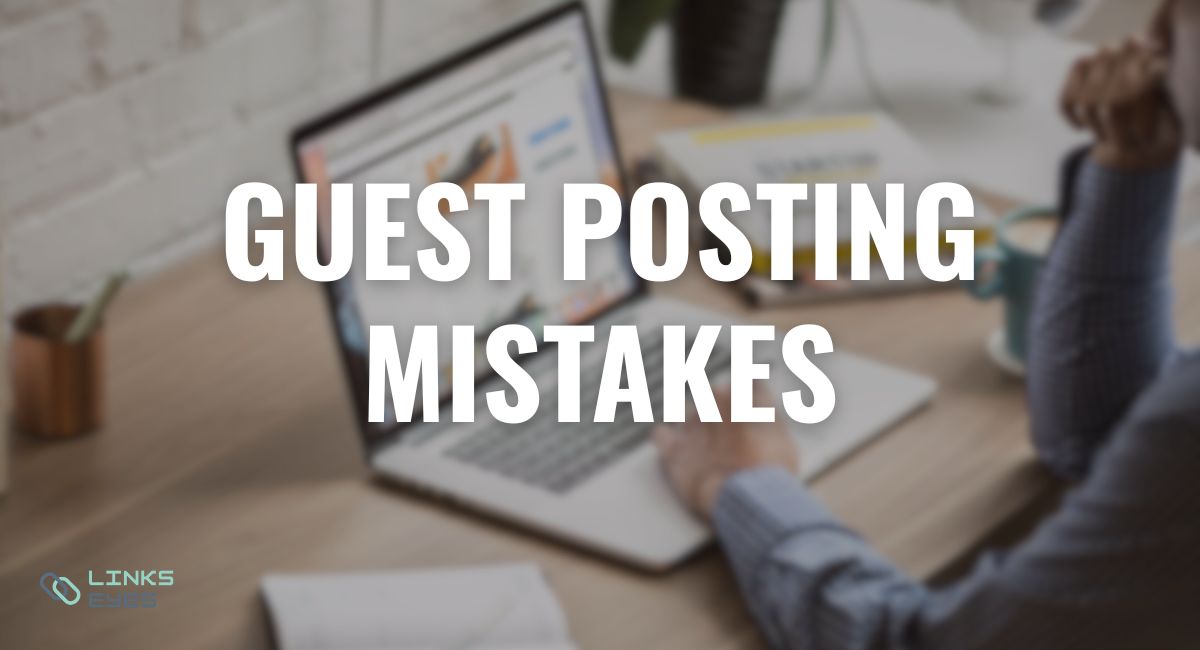
How to Find High-Quality Guest Posting Opportunities in 2025 (and Beyond)
Guest posting opportunities in 2025 are more valuable than ever for SEO professionals, bloggers, and brands looking to expand their reach. But not all links are created equal. Today, success depends on finding the right guest blogging sites that match your niche and offer real authority. This approach goes beyond backlinks—it’s about building trust, visibility, and relevance in your industry.
A strong guest blogging strategy can drive organic traffic, improve domain authority, and position you as a thought leader. By targeting editorial guest posts and avoiding spammy networks, you ensure long-term SEO growth. Let’s explore how to find guest post opportunities that truly move the needle in 2025.
Table of Contents
ToggleWhy Guest Posting Still Matters in 2025
While trends in SEO evolve quickly, guest posting in SEO remains a cornerstone tactic. When done right, it does more than just earn a link—it helps you reach new audiences, rank higher, and build your brand’s topical authority. Google still rewards editorial guest posts placed on relevant niche blogs that offer useful, original content.
In 2025, guest post submission is no longer just a link game. Search engines analyze relevance, context, and the quality of your connections. When your posts appear on authoritative guest posts platforms, your content becomes part of a larger trust signal. This improves your visibility in search results and strengthens your domain’s profile in a natural way.
Key Takeaways:
- Guest posting builds authority, not just backlinks.
- Search engines prioritize relevance and context in 2025.
- Focus on trusted blogs with real audiences and organic reach.
Set Clear Goals Before You Start Guest Posting
Before diving into outreach, you need clarity. Are you focused on gaining high DA guest posting links, increasing brand awareness, or driving referral traffic? Your answer will shape your targets. For example, if traffic is the goal, go for guest blogging sites with active readership. If it’s quality backlinks, seek domains with strong SEO metrics and topical authority.
Your content angle and pitch strategy are also influenced by your goal definition. Some blogs favor thought leadership, others prefer tactical tutorials. When you know what you want, it’s easier to align with the editorial standards for guest submissions and create pitches that resonate.
What Makes a Guest Post Opportunity “High Quality”?
Not all guest blogging platforms are worth your time. High-quality opportunities meet key criteria: topical alignment, domain authority, traffic, and editorial trust. You want to write for websites that publish fresh content, attract real audiences, and offer contextual links—not blogs that exist just to sell space.
Use tools for finding guest blogging opportunities like Ahrefs or SEMrush to evaluate metrics like traffic, backlink profile, and organic keyword visibility. You’re looking for signs of life—engaged comments, active social shares, and quality outbound links. These are all signals that a blog is trustworthy and offers relevant blogs accepting contributions.
Quick Criteria to Spot High-Quality Sites:
- Matches your niche and audience expectations.
- Publishes fresh, non-spammy content with genuine engagement.
- Links naturally to relevant sources and maintains editorial standards.
| Criteria | High-Quality Guest Post Site | Low-Quality Guest Post Site |
|---|---|---|
| Domain Authority (DA) | 40+ with consistent traffic | Low DA or inflated with no organic presence |
| Content Relevance | Matches your niche with clear topical focus | Covers unrelated or overly broad topics |
| Editorial Standards | Posts are well-edited, formatted, and authored by experts | Poor grammar, no editing, or spun content |
| Outbound Links | Natural placement, contextually relevant | Stuffed with do-follow links or obvious SEO manipulation |
| User Engagement | Active comments, social shares, or email subscribers | No interaction or signs of real audience |
| Backlink Profile | Clean, diverse, and natural (check with Ahrefs or SEMrush) | Spammy links, link exchanges, or sudden unnatural growth |
| Publishing Frequency | Consistent but not excessive (1–3x/week) | Dozens of posts per day or erratic posting pattern |
| Submission Guidelines | Clear, detailed, with specific content expectations | Generic or absent guidelines; pay-to-play only |
How to Identify Relevant Guest Post Opportunities
The foundation of a great guest posting strategy is topical relevance. Writing about SEO on a food blog won’t help your rankings or authority. You need to find relevant niche blogs that match your target audience and expertise. This ensures your content fits naturally into the blog’s ecosystem and reaches people who care.
Start by making a list of your core topics and related keywords. Then search for blogs in that space using Google search operators for guest posts, like “write for us” + your niche. Filter based on alignment with your content style and business goals. It’s worth looking into guest blogging sites like these.
8 Smart Ways to Find Guest Post Targets

Finding the right blogs can feel like a full-time job—but with the right methods, you can build a list efficiently. Whether you’re working manually or using automation, your goal is to identify blogs that accept contributions and align with your niche.
Here are eight effective ways, combining both traditional and modern techniques, to discover guest posting opportunities that work in 2025.
1. Use Google Search Operators
Google remains the simplest way to uncover opportunities. Queries like “write for us SEO”, “submit a guest post marketing”, or intitle:guest post guidelines help you surface relevant pages. These footprints can quickly lead to dozens of open blogs.
But be cautious. Not every blog that accepts posts is worth targeting. Many sites are link farms disguised as blogs. Evaluate each site carefully to avoid spammy guest post site red flags like thin content, poor design, or an overabundance of external links.
Effective Search Operator Examples:
- “write for us” + your topic
- inurl:guest-post + “SEO”
- “submit a guest post” + [industry keyword]
- site:.edu “guest post by” for educational blogs
2. Analyze Competitor Backlinks
If your competitors are ranking well, chances are they’re earning guest posting in SEO opportunities you haven’t discovered yet. Use Ahrefs or SEMrush to explore their backlink profiles and look for patterns. Are they posting on industry publications? Personal blogs? Local sites?
Once you identify these placements, vet them. Not all backlinks are equal. Focus on replicating the high-authority ones that are relevant to your content. This competitor backlink analysis for guest posting is one of the most reliable ways to grow fast.
Tools to Uncover Competitor Guest Posts:
3. Tap Into Guest Blogging Directories and Marketplaces
Some platforms specialize in connecting writers and publishers. While many are outdated or low-quality, some still work well. Examples include Guestpost.com, BloggerLinkUp, and newer tools like Postaga that streamline guest post outreach.
Directories also serve as inspiration. Even if you don’t pitch through them, you can extract domains and do your own LinkedIn outreach or cold emails. Always double-check site quality before submitting—editorial guest posts only matter if the host site has real value.
4. Leverage AI to Speed Up Prospecting
AI is transforming the way we find and qualify guest post leads. Use tools like ChatGPT and Surfer SEO to generate ideas, create shortlists, and even draft custom pitches. AI won’t replace your voice, but it can save you hours of manual research.
Still, don’t rely solely on AI. The best approach combines manual vs AI-assisted guest post research. AI helps you scale. Human judgment ensures quality. Always revise pitches and content to match the blog’s tone, expectations, and reader needs.
AI Tools That Help with Guest Posting:
- ChatGPT for pitch templates and topic ideation.
- Surfer SEO for content optimization and brief generation.
- Postaga for automating prospect research and outreach.
5. Monitor Opportunities with Alerts and Social Media
Use Google Alerts to monitor keywords like “guest post guidelines” or “accepting contributors”. Set up alerts for your niche and competitors’ names. You’ll be notified when new opportunities go live.
Social platforms like Twitter also reveal calls for content. Use Twitter Advanced Search with filters like “guest post + your topic” to catch real-time publishing opportunities. BuzzSumo can also help track content trends and find active blogs.
6. Join Communities Where Publishers Hang Out
Online communities are rich with opportunity. Platforms like Reddit’s r/SEO, Slack groups, and SEO forums often feature threads where bloggers exchange content, seek contributors, or share guest posting leads.
These communities are ideal for building relationships with site owners, which leads to recurring posts and better editorial access. Introduce yourself, share value, and stay active. The best guest posts often come from mutual trust—not cold emails.
7. Explore HARO & Journalistic Platforms
Help A Reporter Out (HARO) and Qwoted allow writers to respond to journalist queries and secure mentions on top-tier sites. While not technically guest posts, these placements are editorial and high-authority—perfect for your link building techniques.
These platforms are especially effective for thought leaders, consultants, and founders. Respond with useful insights, link to your resources, and follow up professionally. You’ll earn trusted backlinks without pitching entire articles.
8. Check Comment Sections of Authority Blogs
Active blogs often have equally active commenters. Many of these users are bloggers or marketers themselves. By interacting meaningfully in comment sections, you can uncover potential partnerships and future guest post outreach opportunities.
Start conversations, link your site subtly (if allowed), and follow them on LinkedIn outreach or email. When you’ve already interacted on their turf, your outreach feels warmer and more personal.
How to Avoid Spammy or Low-Quality Guest Post Sites
In the rush to land links, many marketers fall into the trap of low-quality guest blogging platforms. These sites may have open doors, but if their content is shallow, overloaded with links, or lacks traffic, they can hurt your SEO more than help it.
Always vet opportunities using tools like Google Search Console, SEMrush, or Ahrefs. Look for warning signs: poor design, generic content, or no organic traffic. Don’t compromise your brand for a fast link. Quality matters.
Red Flags to Watch Out For:
- Overloaded with ads or external links.
- Low traffic or suspicious backlink profile.
- Accepts all submissions with little editorial review.
How to Qualify a Guest Post Site (Checklist)
Before submitting, run through a quick validation checklist. Is the blog active? Does it rank for keywords? Is the content fresh, useful, and engaging? Do they link out responsibly? These answers will tell you if the site’s worth your effort.
Subscribe to industry blogs with Feedly to keep track of new posts. Use Ahrefs to check backlink health. Confirm that your niche aligns with their editorial voice. Only then should you pitch.
Writing Winning Outreach Emails That Get Responses
The success of your campaign depends heavily on your outreach email for guest post. A good pitch is personal, brief, and focused on value. Mention what you like about their blog, why you’re a good fit, and what topic you’d love to write about.
Avoid generic templates. Tailor every email based on the editor’s style and past content. Show that you’ve done your research. The more human and relevant you sound, the better your chances of getting accepted.
Outreach Email Best Practices:
- Personalize every email with the editor’s name and blog reference.
- Pitch a unique idea that aligns with their recent content.
- Keep your message short, polite, and focused on value.
What to Do After Your Post Goes Live
Once published, don’t just leave the post hanging. Share it on your channels, tag the editor, and engage with readers in the comments. You want the post to perform well—not just for SEO but also for your brand.
Track its performance using Google Search Console. Measure referral traffic, link engagement, and keyword movement. This helps in tracking ROI from guest blogging and refining your future pitches.
Many newcomers submit content that is either off-topic, overly promotional, or poorly written. Others spam editors with templated pitches or try to buy placements. These practices hurt your reputation and waste time.
Stick to guest posting best practices 2025: value-first content, targeted outreach, and long-term relationship building. Avoid any signs of automation, low-quality writing, or irrelevant contributions.
Final Thoughts: Sustainable Guest Posting Strategy
The future of guest blogging in SEO lies in authenticity, relevance, and strategic placement. Avoid shortcuts. Focus on content marketing through guest blogging that builds your brand, serves the audience, and earns editorial trust.
With the right tools, consistent outreach, and a deep understanding of your niche, you can secure authoritative guest posts that elevate your SEO in 2025 and beyond.
Need Help With Guest Posting?
Frequently Asked Questions (FAQ)
What are guest posting opportunities?
Guest posting opportunities are chances to publish your content on other websites to build backlinks, reach new audiences, and boost your authority.
How to find a guest post opportunity?
You can find them by using search operators, analyzing competitor backlinks, joining communities, or using tools like Ahrefs and Google Alerts.
Is guest posting in demand?
Yes, guest posting remains a high-demand strategy for SEO, branding, and content marketing in 2025.
What is the future of guest posting?
Guest posting is evolving toward quality-focused, niche-specific contributions that prioritize editorial value and relationship building.
Is guest posting worth it in 2025?
Absolutely—when done right, guest posting provides long-term SEO benefits, brand exposure, and authoritative backlinks.
Is guest posting real or fake?
Guest posting is real and effective, but only when you avoid spammy sites and focus on genuine, editorial placements.
Related Posts

15 Common Guest Posting Mistakes to Avoid
August 12, 2025

The Ultimate Guide to Guest Posting for SEO in 2025
August 4, 2025


